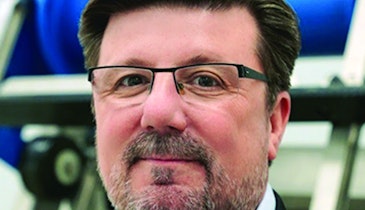The Centrisys/CNP Resource Intensification Portfolio is an integrated process solution and individual equipment approach to biosolids handling that leverages proven technologies to provide alternatives to conventional treatment processes.
One such process is the PONDUS (TCHP) Process that was used when the Kenosha (Wisconsin) Wastewater Treatment Plant produced more gas than it needed, but not enough to justify installing another gas engine.
By using the PONDUS process on the waste activated sludge, it increased gas production by more than 20 percent, allowing for the installation of a combined heat and power (CHP) unit.
The CHP’s engine runs on methane gas, turning a generator to create power. The heat produced by this engine is used to heat the waste-activated sludge to make the PONDUS system work, creating more gas. It’s a symbiotic relationship that allows the plant to produce about one-third of its overall electrical consumption.
PONDUS has a heat exchanger, reactor, two pumps and sodium hydroxide. Temperatures are maintained around 140 degrees F, therefore no additional safety precautions are necessary.
In Kenosha, sludge is thickened to nearly 7 percent solids, making it difficult to pump. PONDUS utilizes a thermo-chemical reaction to change the viscosity of the sludge turning it into a “chocolate milk” consistency for easy flow.
THK series sludge thickeners
The basis of the THK design is what Centrisys is known for — centrifuges — but this sludge thickener is not a modified dewatering centrifuge. The THK is engineered specifically to thicken primary and waste activated sludges using the fundamental principles of a centrifuge: Dissolved air flotation thickener (DAFT) and rotary drum thickener. THK thickeners are simple to operate, require minimal operator attention and have a low cost of ownership.
“Kenosha installed a Centrisys THK200 in 2011,” says Melissa Arnot, Kenosha Water Utility director of operations. “This one THK replaced four DAFTs, operated 24/7 using no polymer, achieved 5 percent TS cake and 95 percent capture. In 2015, we upgraded our plant and now have an additional THK200 for primary sludge. This THK200 doubled our solids concentration and cut in half the amount of water sent to the digesters.”
CalPrex pre-digestion phosphorus recovery
CalPrex maintains a 6.5 pH, recovers phosphorus as a brushite crystal with up to 41 percent P2O5 and can minimize digester and sidestream phosphorus loading by over 50 percent. CalPrex uses no ammonium, diverts over 50 percent of the soluble phosphorus from the digester along with 60 percent solubilization of phosphorus in Bio-P sludge.
Airprex post-digestion phosphorus recovery
AirPrex removes struvite while improving treatment efficiency. It’s an affordable option to control struvite and recover phosphate for all sized plants. AirPrex improves sludge dewaterability, reduces polymer consumption up to 30 percent, reduces maintenance costs up to 50 percent, and reduces disposal costs up to 20 percent with no sodium hydroxide required, according to the manufacturer.
Hydrograv Adapt variable inlet system
The Hydrograv Adapt is a process that adjusts to current loading. When loads are low, it shifts the inlet elevation and opening height to a low position, introducing the mixed liquor below the sludge blanket. When loads increase, it shifts to a higher elevation and opening height.
Centrisys/CNP is a U.S.A. manufacturer of dewatering centrifuges, sludge thickeners and also provides repair and parts for all centrifuge brands. CNP, a division of Centrisys, designs and supplies nutrient-recovery and biosolids treatment optimization systems.
262-654-6006 | info@centrisys.com | info@cnp-tec.com
www.centrisys.com | www.cnp-tec.com



